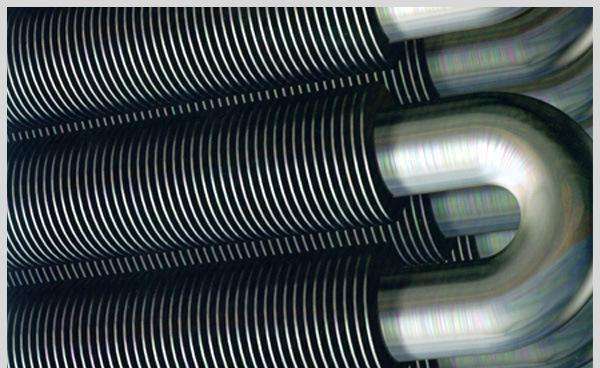Comparison the integral fin tube VS HFW fin tube
Integral fin tubes and high-frequency welded (HFW) fin tubes are both used to enhance the heat transfer efficiency of heat exchangers, but they differ in manufacturing process, strength and durability, heat transfer efficiency, cost, and applicability. Integral fin tubes are formed by extruding fins from the parent tube material, ensuring high strength and durability, as well as efficient heat transfer. On the other hand, HFW fin tubes are produced by helically welding fins onto the base tube using high-frequency electric resistance welding, offering relatively lower costs but potentially compromising durability due to the welding process.
1. Comparison the integral fin tube and HFW fin tube in manufacturing process:
- Integral Fin Tube: In this method, the fins are an integral part of the tube itself. The fins are typically formed by cold rolling or extrusion during the tube manufacturing process. This creates a strong bond between the tube and fins.
- HFW Fin Tube: HFW fin tubes are manufactured by the High-Frequency Welding process. The fins are first produced separately as individual fin strips. Then, they are welded to the outer surface of the base tube using high-frequency electrical resistance welding.
2. Comparison the integral fin tube and HFW fin tube in bonding strength:
- Integral Fin Tube: The bond between the tube and fins in an integral fin tube is strong, as there are no separate welding lines or joints.
- HFW Fin Tube: Although the welds in HFW fin tubes are generally robust, they may not be as strong as the integral fin tubes bond due to the presence of welding joints.
3. Comparison the integral fin tube and HFW fin tube in heat transfer efficiency:
- Integral Fin Tube: Since the fins are an integral part of the tube, there is excellent thermal contact between the tube and the fins, resulting in efficient heat transfer.
- HFW Fin Tube: The welding process in HFW fin tubes may create small gaps or discontinuities between the fins and the tube, which could slightly reduce the overall heat transfer efficiency compared to integral fin tubes.
4. Comparison the integral fin tube and HFW fin tube in manufacturing flexibility:
- Integral Fin Tube: The manufacturing process for integral fin tubes is relatively more complex and requires specialized equipment. It may be suitable for mass production.
- HFW Fin Tube: HFW fin tubes offer more flexibility in terms of fin design and customization. Different fin types can be easily welded onto tubes, allowing for a wider range of heat transfer requirements.
5. Comparison the integral fin tube and HFW fin tube in application and usage:
- Integral Fin Tube: These tubes are often used in applications where high thermal efficiency and a strong bond between the fins and tube are crucial, such as air coolers, heat exchangers, and some condenser applications.
- HFW Fin Tube: HFW fin tubes find applications in various industries, including petrochemical, power generation, and HVAC systems, where specific heat transfer requirements and customization are needed.
6. Comparison the integral fin tube and HFW fin tube in cost:
- Integral Fin Tube: The manufacturing process of integral fin tubes may lead to higher production costs compared to HFW fin tubes.
- HFW Fin Tube: HFW fin tubes are generally more cost-effective, making them suitable for various budget-conscious projects.
Integral fin tubes and high-frequency welded (HFW) fin tubes are both used to enhance heat transfer efficiency in heat exchangers, but they differ in manufacturing process, strength and durability, heat transfer efficiency, cost, and applicability. Integral fin tubes are formed by extruding fins from the parent tube material, resulting in high strength and durability, as well as efficient heat transfer; whereas HFW fin tubes are made by helically welding fins onto the base tube using high-frequency electric resistance welding, offering lower costs but potentially lower durability due to the welding process.


